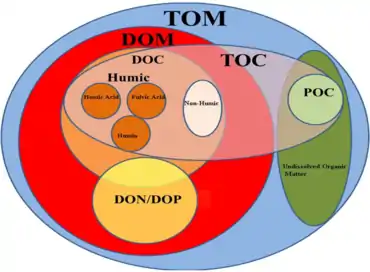Lipid pump
The lipid pump is the sequestration of carbon from the ocean's surface to deeper waters through the usage of lipids by overwintering vertically migratory zooplankton. This carbon enters the deep ocean through respiration and mortality of the zooplankton in question. This lipid pump also entails a lipid shunt, where other nutrients like nitrogen and phosphorus that are consumed in excess must be excreted back to the surface environment. This means that the carbon transported due to the lipid pump does not affect essential nutrients in the ocean surface.[1] The contribution of the lipid pump to the sequestering of carbon in the deeper waters of the ocean can be substantial: the carbon transported below 1,000 metres (3,300 ft) by copepods of the genus Calanus in the Arctic Ocean almost equals that transported below the same depth annually by particulate organic carbon.[2]
| Part of a series on the |
| Carbon cycle |
|---|
 |
See also
References
- Jónasdóttir, Sigrún Huld; Visser, André W.; Richardson, Katherine; Heath, Michael R. (2015). "Seasonal copepod lipid pump promotes carbon sequestration in the deep North Atlantic" (PDF). Proceedings of the National Academy of Sciences. 112 (39): 12122–12126. doi:10.1073/pnas.1512110112. ISSN 0027-8424.
- Steinberg, Deborah K.; Landry, Michael R. (2017). "Zooplankton and the ocean carbon cycle". Annual Review of Marine Science. 9 (1): 413–444. doi:10.1146/annurev-marine-010814-015924. ISSN 1941-1405. PMID 27814033.